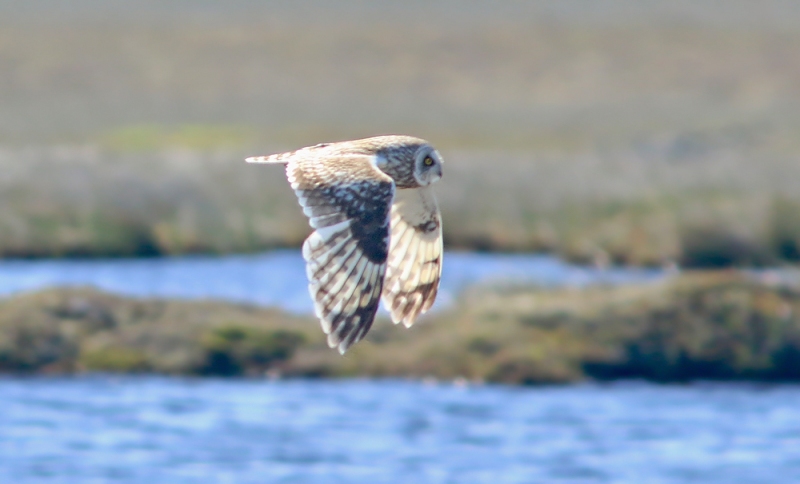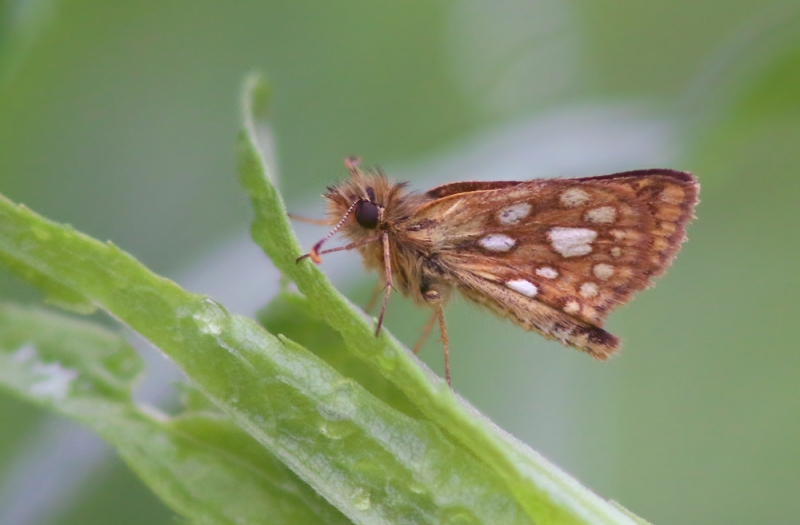It’s been a very busy summer, and I’m finally getting around to sorting through my photos and memories of all the great adventures I shared with people from all over. A huge highlight on my calendar was the “Grand Newfoundland” tour with Eagle-Eye Tours (a great Canadian tour company that runs bird and nature tours all over the world – check them out! I’m scheduled to lead three tours in Newfoundland, New Brunswick and Trinidad & Tobago with them in 2017.)
This was a brand new, cross-island tour that I helped develop from the ground up, so I was even more excited than usual to welcome guests for this adventure. Adding to the fun, I was joined by my good friend, top-notch birding guide and Bird Studies Canada biologist/educator Jody Allair. We’ve shared adventures while guiding tours together in some pretty amazing places, but being able to show him the incredible birds, wildlife and scenery of my home was just as special. (Check out these blog posts about other adventures that Jody and I have led together: New Brunswick 2013; Hawaii 2014; and Trinidad & Tobago 2015).
Our tour started in St. John’s on June 22 and took us to birding hot spots, incredible vistas, and some of my own (often less traveled) favourite places across the island – culminating with a few days in the stunning Gros Morne National Park. We explored coastal islands and towering cliffs, boreal forests, wide-open tundra, wetlands, and even a desolate chunk of the earth’s mantle during our adventure! We ended up observing 108 species of birds, lots of other wildlife and interesting wildflowers, enjoying awesome scenery and having loads of fun!

While Jody & I have always been blessed with excellent groups, this one was especially great – energetic, easy-going and always up for some fun! Here they pose in front of the iconic “battery” in St. John’s.

One of our first stops was at Cape Spear National Historic Site – not only the easternmost point of land in North America, but also a great place to look for birds. We were rewarded with four Sooty Shearwaters – some of the first reported this summer!

It turned out our group shared a wide range of interests, including wildflowers. This Pink Ladyslipper was the first of eight orchid species we discovered during our travels.

One obvious highlight was our boat tour to the Witless Bay Ecological Reserve, where we experienced (not just “saw”!) North America’s largest colony of Atlantic Puffins. It never disappoints.

However, Puffins only account for some of the 4.5 million seabirds that nest in the reserve during the summer. A huge part of this spectacle is the incredible swarms of Common Murre that make their home on the islands’ rocky cliffs.

Not all the birds are so easy to see. Thick-billed Murre are like a needle in the haystack of their far more numerous cousins, but we were fortunate to get very close looks at one pair. Note the blacker plumage and white gape-line compared to Common Murres.

The Witless Bay Ecological Reserve is also a great place to look for whales, and we were treated to great views of a Minke Whale at Bay Bulls.

Northern Fulmar are a scarce breeder along our coast, but we found one pair checking out the cliffs on Gull Island. What a treat to have one of them circle around behind our boat!

For a special treat, some of the group joined Cod Sounds (Lori McCarthy) for a guided foraging walk and a traditional Newfoundland “boil up” on the beach.

We even snuck in a little birding along the way, with Common Loons flying over and both Common & Arctic Terns patrolling the sheltered bay.

It was a beautiful evening, culminating in a feast of delicious cod stew, sunset on the beach, and even a couple seals popping in to check us out. No wonder it was listed as a trip highlight by several of our guests!

The sheltered inlet of Biscay Bay proved very productive, including very close looks at all three species of Scoter (Surf and Black pictured above) and Long-tailed Duck among other great birds.

We spent a full morning exploring the world’s southernmost sub-arctic tundra. Not only was the beautiful, stark landscape a big hit with our group but so were our encounters with Willow Ptarmigan, Rough-legged Hawk, and several Woodland Caribou! Guests especially enjoyed watching two Short-eared Owls hunting right alongside the road.

Not to be overlooked, we also had great views of several Short-tailed Swallowtails. These stunning butterflies have a very restricted range, with Newfoundland being one of the only places you can expect to find them. And find them, we did.

Another favourite landscape for our group was the vast bogs that Newfoundland has in spades. Whether its birds, bugs or wildflowers, a good bog always has a few surprises in store.

The crowd pleaser on this particular “bog slog” was Dragonsmouth Orchid (Arethusa bulbosa). Beautiful, as always.

While we were blessed with great weather throughout the tour, we did encounter a little fog at Cape St. Mary’s. Fog is a regular part of the climate in Newfoundland, especially here. But that didn’t stop us from enjoying the thousands of Northern Gannets that call this sea stack and surrounding cliffs home during the summer, nor the incredible atmosphere of this very special place.

Nearby St. Bride’s, at the mouth of Placentia Bay, is one of those magical places where you can watch the sun set over the ocean on a nice evening. And it didn’t disappoint.

The beautiful sunset even provided nice light for a quick game of twilight mini-golf. Here’s Jody honing his lesser known set of skills.
Leaving the Avalon Peninsula behind, we started west across the island. Our first stop was in Terra Nova National Park, where we explored the sheltered coves, thick boreal forests and abundant wetlands that the park is famous for.

Gray Jay is often associated with northern boreal forests – a habitat that is well represented in Terra Nova National Park. We encountered these curious birds at several places during our tour, including a family group in an old burn here in the park.

We also enjoyed the antics of several unusually cooperative Hermit Thrush during our hikes. This one was clearly feeding young near the trail and gave great, prolonged views.

One of our most interesting hikes was around a large pond and adjoining bog. Here we found great birds such as Palm Warbler, Lincoln Sparrow, Olive-sided Flycatcher and even a Spruce Grouse that almost walked between my legs before sauntering back off the trail. (Unfortunately, I only managed an overexposed photo of its butt!)

One of our most exciting discoveries was several Jutta Arctic butterflies at two locations in the park. This species is not widely known in Newfoundland and its population has been listed as “sensitive”. The thrill of finding them was more than evident in both guides!
Central Newfoundland is often treated as a “waystop” during bird & nature tours – somewhere to rest on the way to somewhere else. But I grew up in central Newfoundland and know firsthand the great birds, wildlife and scenery it has to offer. So not on my watch! We spent a full day exploring the forests, wetlands and rivers in Gander and Grand Falls-Windsor.

A little taste of rain in central Newfoundland didn’t slow us down, and we made the most of some beautiful walking trails in Grand Falls-Windsor. This Ovenbird was one of several new species we saw as we headed west across the province and encountered new habitats and forest types.

Taking a little break from the birding, we also visited the Salmonid Interpretation Centre in Grand Falls-Windsor. It was great opportunity to learn about Atlantic Salmon and get to see some of these amazing fish as they traversed the might Exploits River.

Another interesting butterfly was this Arctic Skipper that posed nicely for our cameras during a bird walk in Gander. It was actually a new one for my Newfoundland list!
Gros Morne National Park offers not only great birding but an opportunity to explore world-famous geological features and lush wilderness. The beautiful landscapes, more varied forests, and stunning Long Range Mountains provide a very different setting than we had experienced anywhere else on the island thus far.

The last few days of our adventure were spent in Gros Morne National Park – an incredibly beautiful and wild place, as well as a UNESCO World Heritage Site.

One of our first stops was to admire a treasure of time hiding in plain sight. This trilobite lived here more than 450 million years ago – long long before birds ever took to the skies.

Western Brook Pond, an ancient landlocked fjord, is a pinnacle of the park’s amazing scenery. Our hike took us through forests and over bogs to this beautiful place – with lots of birds and wildflowers along the way.

Tall Northern Green Orchids (Platanthera huronensis) were one of several orchid species found blooming along the trail.

Our boat cruise through the fjord was a hands-down highlight for the group. The low cloud made for a surreal scene and we even picked up a few new bird species along the way!

The northernmost stop on the tour was at The Arches Provincial Park, where we explored the rugged coastline and unique rock formations that give the place its name. In this area we encountered Caspian Terns, Common Eider families, both Double-crested and Great Cormorants, and even a big flock of White-winged Crossbill.

This year seemed to be an especially good one for some orchids, including these stunning Showy Ladyslippers (Cypripedium reginae). We were fortunate to find them in full bloom and glory.

Less “showy” but equally notable were these clusters of Vreeland’s Striped Coralroot (Corallorhiza striata vreelandii). These orchids are only found in a few locations on the island and protected under the province’s Endangered Species Act.

Our last full day of exploring included a visit to the Tablelands – a vast outcrop of ultramafic rock that originated in the earth’s mantle and was thrust to the surface during a plate collision hundreds of millions of years ago. This rust-coloured mountain lacks most essential nutrients, resulting in very little plant life. It looks like a chunk of Mars fell and planted itself in the middle of Newfoundland!

One of the signs of life we did see here was Common Butterwort – one of four carnivorous plants we found during the tour!




